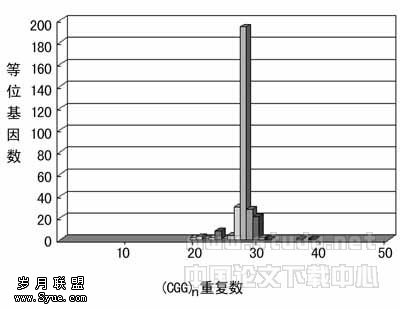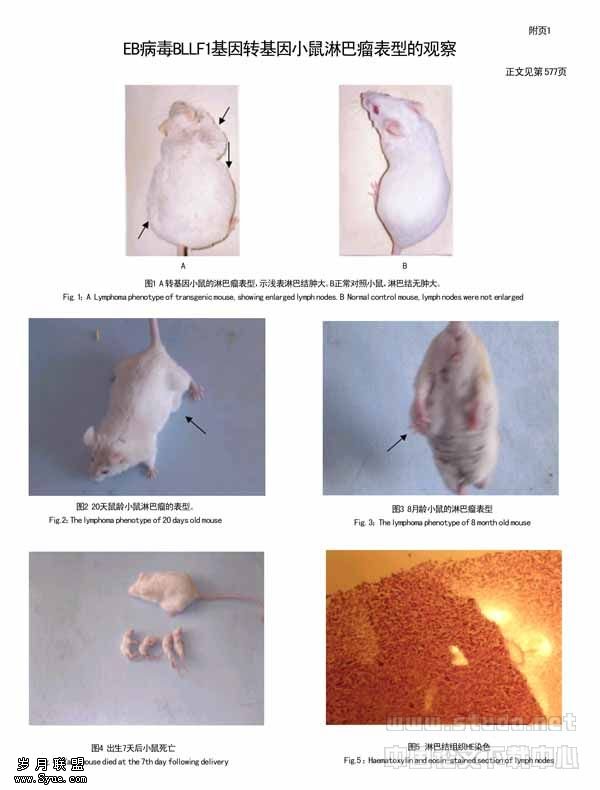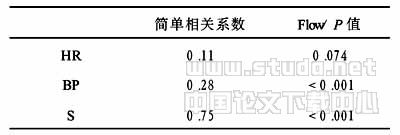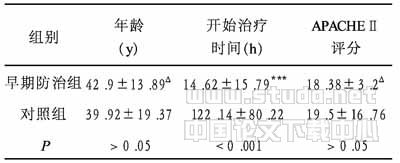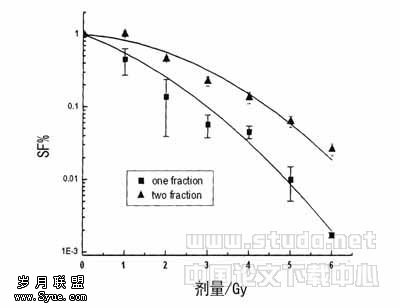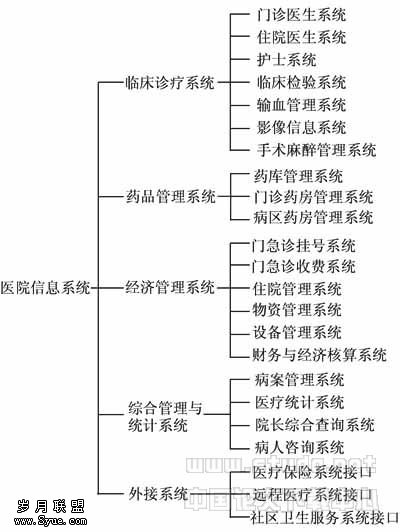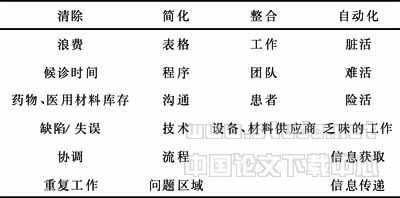Locally Advanced Pancreatic Cancer: Current Therapeutic Appr
作者:Higinia R. Cardenesa, Elena G. Chioreanb, John DeWittc, Max Schmidtd, Patrick Loehrerb
【关键词】 Pancreatic,cancer
Key Words. Pancreatic cancer ; Locally advanced disease ; Chemoradiotherapy ; Surgery ; Molecular targeted therapy
ABSTRACT
Even though pancreatic cancer accounts for only 2% of all cancer diagnoses in the U.S., it is the fourth-leading cause of cancer death and one of the most difficult malignancies to manage. Because of the usually late onset of symptoms, only 10%15% of patients present with resectable disease, whereas the remaining 85%90% present with locally advanced unresectable or metastatic disease. Despite a lack of consistent evidence from previous clinical trials, chemotherapy in addition to radiation therapy is the most commonly used approach in treating locally advanced pancreatic cancer. The most appropriate chemotherapy in combination with radiation is still debatable between 5-fluorouracil and gemcitabine, and novel trends to prevent resistance and enhance efficacy incorporate biologically targeted agents. This paper reviews the current management options, controversies, and ongoing and future directions for the treatment of locally advanced adenocarcinoma of the pancreas.
INTRODUCTION
The American Cancer Society estimated that there would be 32,180 new cases of pancreatic cancer (PC) in the U.S. in 2005 and 31,800 deaths, representing the fourth most common cause of cancer mortality [1]. Despite continuing advances in diagnostic imaging and staging, improvements in radiation therapy techniques, and availability of new systemic therapies, the survival and mortality from PC have remained relatively constant. For all stages combined, the 1-year survival rate is around 20%, and the overall 5-year survival rate has remained dismally poor at <5% [1]. Complete surgical resection remains the only curative treatment for PC. Studies from high-volume centers with optimal staging report up to a 15%20% 5-year survival rate in patients undergoing resection [2, 3]. Unfortunately, because of the typically late onset of symptoms, only about 15%20% of cases of PC are amenable to surgical resection at the time of diagnosis. Of the remaining 80%85% of patients, 40% present with advanced locoregional disease precluding complete resection, with a median survival time (MST) of 611 months, and the other 45% of patients present with metastatic disease, with an MST of 36 months [46].
In the 2003 American Joint Committee for Cancer (AJCC) staging system (Table 1) [7] T1T3 lesions, stage grouping 0IIB, fulfill criteria for local resectability; on the other hand, T4 lesions (involvement of the celiac axis or the superior mesenteric artery or stage III disease) as well as patients with metastatic disease (stage IV) are considered unresectable.
Preoperatively, in the absence of confirmed metastatic disease, the following radiological criteria are used to determine unresectability: (a) evidence of involvement of the superior mesenteric artery (SMA) or celiac axis (isolated splenic artery involvement is not a contraindication for complete surgical resection); (b) absence of vascular flow through the superior mesenteric veinportal vein confluence (SMV-PV) [8]. While partial venous involvement of the SMV-PV is considered potentially resectable [9], complete encasement leading to vascular thrombosis and cessation of blood flow in the SMV-PV as detected with either endoscopic ultrasound (EUS) or dual-phase helical computed tomography (CT) is considered a contraindication to operation for curative intent [10]; and (c) celiac axis involvement/encasement with tumor or direct involvement of inferior vena cava or aorta.
Complete surgical removal (R0 resection), with negative histological margins, is an independent predictor of survival [3, 1112] and remains the only potential curative treatment for pancreatic cancer. The presence of positive microscopic (R1 resection) or gross (R2 resection) margins in up to 50% of the patients undergoing potentially curative resections represents a suboptimal therapeutic result, with an MST of 612 months, similar to those patients with unresectable nonmetastatic disease.
CLINICAL PRESENTATION AND STAGING
The majority of patients with tumors involving the head of the pancreas present with symptoms related to biliary obstruction. Often patients report long-standing abdominal pain, early satiety, weight loss, asthenia and anorexia, and/or symptoms related to gastric outlet obstruction. New onset of diabetes mellitus may be the first clinical feature in approximately 10% of all patients.
The main goal of the initial evaluation is to identify patients with potentially resectable disease while avoiding surgical exploration when futile. CT scan is the main imaging modality used for the evaluation of pancreatic masses. Current, state-of-the-art CT multiphasic multidetector CT (MDCT) acquires postcontrast injection contrast images during both the pancreatic (arterial) and portal venous phases to maximize localization of the primary tumor and potential metastasis. Furthermore, multiplanar reconstruction of acquired images permits optimal assessment of its resectability and relationship to surrounding vessels [13].
In patients with obstructive jaundice, endoscopic retrograde cholangiopancreatography (ERCP) and biliary stenting is often performed to relieve bile duct obstruction. During ERCP, brush cytology is generally obtained from accessible pancreatic or bile duct strictures. When cytology from ERCP is negative or nondiagnostic, other sampling methods are clearly needed to establish the diagnosis. Although percutaneous ultrasound or CT-guided fine needle aspiration (FNA) biopsy of pancreatic cancer both have a sensitivity of about 80% [14], their use has decreased as a result of reports of needle-track seeding and because of the development of EUS. EUS-guided fine needle aspiration (EUS-FNA) of pancreatic masses may be performed during real-time imaging, with reported sensitivity and specificity rates of 90% and almost 100%, respectively [15]. EUS is particularly useful for detection of small tumors not visible on CT imaging. The combined use of CT, EUS, and ERCP allows staging, stenting of common bile duct when indicated, and FNA of a pancreatic mass. In selective cases, magnetic resonance imaging (MRI) may be used for tumor staging. Magnetic resonance cholangiopancreatography (MRCP) [16] may help determine resectability.
With optimal preoperative imaging studies, routine laparoscopy has a low yield in the detection of unresectability or metastases [17, 18]. In the subgroup of patients in whom surgical resectability is deemed uncertain on preoperative imaging, however, laparoscopy will determine unresectability in 23% of patients [19]. In addition, for those with locoregional disease on CT scan, staging laparoscopy can detect metastatic peritoneal or liver disease in up to 37% of patients, in which case the prognosis is as dim as for those with metastatic cancer [20].
CURRENT MANAGEMENT OPTIONS OF LOCALLY ADVANCED PC
The management of patients with locally advanced PC involves a multidisciplinary approach among the pancreatic surgeon, gastroenterologist, and medical and radiation oncologists. The main consideration is whether a patient is ultimately a candidate for combined chemoradiotherapy (chemo-RT) or chemotherapy alone, and this decision is reflected by the patient’s performance status, extent and intensity of symptoms, and nutritional status, and potential toxicity of the proposed therapy as to its impact on quality of life.
Palliative Surgery
Symptoms of PC that may require intervention include duodenal obstruction, biliary obstruction, hemorrhage, and pain.
In patients with obstructive jaundice or gastric outlet obstruction, surgical bypass or endoscopic stent placement may be considered. If at the time of laparotomy the tumor is indeedunresectable, the patient may under go a double bypass procedure (gastrojejunostomy and either hepatico-or choled-ochojejunostomy [21]). The benefit of prophylactic gastrojejunostomy, although demonstrated in a previous randomized study conducted by Lillemoe et al. [22], is controversial.
Obstructive Jaundice
Biliary obstruction may be relieved by endoscopic stenting or via open/laparoscopic bilioenteric bypass, with similar success rates [23]. Expandable metal stents are preferred when the possibility of surgical resection has been excluded because they have a longer complication-free interval than plastic stents [24].
Gastroduodenal Obstruction
Endoscopically placed expandable metal stents appear to be a more favorable option than surgical bypass for the relief of symptomatic gastric outlet obstruction, with an excellent success rate, similar survival, shorter hospital stay, and much lower cost than with surgical bypass [25, 26]. To date, there is no evidence that prophylactic stenting or gastrojejunostomy bypass in asymptomatic patients is beneficial, with the exception of patients who are already at laparotomy when unresectability is determined [22].
Celiac Plexus Neurolysis
The abdominal and back pain associated with unresected PC can be a major debilitating symptom contributing to patient’s worsened quality of life. Often, palliation of pain can be successfully achieved by narcotic analgesics alone. An increasingly used approach is celiac plexus neurolysis or chemical splanchnicectomy of the celiac plexus via local injection of absolute alcohol, percutaneously, under ultrasound or CT guidance, with EUS, or intraoperatively, at the time of palliative surgery [27].
Hemorrhage
Bleeding from the tumor should be controlled endoscopically with local fulguration and injection methods. If this is unsuccessful, angiography and embolization should be attempted. Rarely, duodenotomy and suture of the bleeding vessel may be required.
Chemotherapy and Radiation
A number of studies have shown that both survival and palliative benefit can be improved when radiotherapy (RT) is combined with chemotherapy. However, the survival benefit is still modest and local control remains a significant challenge.
Chemo-RT Using 5-Fluorouracil
For the better part of the past three decades, 5-fluoroura-cil plus RT (5-FU + RT) has been considered the standard of care for locally advanced PC. Randomized trials by the Mayo Clinic in the late 1960s and then by the Gastrointestinal Tumor Study Group (GITSG) have shown a significant benefit with 5-FU + RT compared with RT alone, with MSTs of 56 months for RT compared with 811 months for 5-FU + RT [28, 29]. In addition, the GITSG compared chemotherapy alone with chemo-RT, demonstrating a significant survival advantage for the chemo-RT arm (1-year survival rate, 41% versus 19%) [30]. One of the very few trials that addressed the role of chemotherapy with 5-FU versus 5-FU + RT was conducted by the Eastern Cooperative Oncology Group (ECOG) in patients with locally unresectable pancreatic and gastric cancers. That trial failed to confirm a survival benefit or improved local control for the combined modality therapy despite a higher incidence of severe toxicity [34]. The ECOG also conducted a phase I study investigating the use of protracted venous infusion of 5-FU (PVI-5-FU) in combination with RT and established the maximum tolerated dose (MTD) of 5-FU at 225 mg/m2 per day and 59.4 Gy for RT. The MST was 11.9 months, with a 2-year survival rate of 19% [31]. Similar results have been reported by Ishii et al. [32]. A recent phase I study investigated the use of capecitabine with concomitant RT in locally advanced PC and recommended the dose of 800 mg/m2 twice daily to be further evaluated in phase II trials [33].
At present, common practice in the U.S. is for patients with locally unresectable PC to receive continuous infusion 5-FU in combination with RT. As gemcitabine had been shown to provide benefit in advanced PC versus 5-FU, combined gemcitabine and RT is also being used in some centers as well as part of large cooperative group studies.
NEW APPROACHES AND CONTROVERSIES WITH CHEMO-RT
Chemo-RT Using Gemcitabine
In vitro investigations suggest that gemcitabine is a potent radiation sensitizer [35, 36]. A number of potential mechanisms of gemcitabine-induced radiosensitization have been hypothesized [35, 3739], including that gemcitabine may lower the threshold for radiation-induced apoptosis [40]. Many investigators are attempting to define the optimal dosing and schedule for concurrent gemcitabine and RT.
A variety of phase I and II studies has now been conducted in patients with locally advanced PC using RT and weekly or twice-weekly gemcitabine (Table 2). In 1996, two limited institution phase I trials were initiated in patients with unresectable [41] and potentially resectable PC [42]. Both trials used relatively large radiation fields with concurrent gemcitabine (starting at 300 mg/m2 infused over 3060 minutes weekly). Approximately 4 weeks after completion of chemo-RT, the patients continued on gemcitabine at a dose of 1,000 mg/m2, weekly times three every 4 weeks for a maximum of six cycles, or until disease progression or toxicity requiring discontinuation of therapy. Hematologic and gastrointestinal toxicities were found to be dose-limiting toxicities (DLTs) at 700 mg/m2. A confirmatory prospective phase II trial was completed through the Hoosier Oncology Group in patients with unresectable but localized PC using weekly gemcitabine (600 mg/m2) plus concurrent RT (50.4 Gy) [43] followed by gemcitabine alone. The MST was 7.9 months with a 1-year survival rate of 31.1%. The 1-year survival rate and acceptable toxicity formed the basis of the randomized ECOG 4201 trial, which compared gemcitabine and RT with gemcitabine alone.
Similar results have been published using weekly or twice-weekly gemcitabine during the RT [44, 45]. The Cancer and Leukemia Group B (CALGB) conducted a phase II study using gemcitabine (40 mg/m2 twice weekly) in combination with RT (50.4 Gy) in 38 patients with locally advanced PC [46]. The MST was 13.7 months for patients with an ECOG performance status (PS) score of 0, compared with 7.8 months for those with a PS score of 1 or 2. The M.D. Anderson Cancer Center (MDACC) has published a phase I study using dose escalation of gemcitabine (350 mg/m2 to 500 mg/m2 weekly for 7 weeks) and hypofractionated RT (3,000 cGy in 10 fractions) [47]. Grade 34 hematologic and nonhematologic toxicities were significant in all three patient cohorts, probably as a result of the large RT fields. While toxicities where significant, 4 of 17 patients had a partial response and the 1-year survival rate for patients with an objective response was 66%. The recommended phase II dose of gemcitabine was 350 mg/m2.
An alternative strategy has been investigated at the University of Michigan using standard doses of gemcitabine in combination with escalating doses of RT [48]. Thirty-four patients with unresectable or incompletely resected PC were treated with gemcitabine (1,000 mg/m2) weekly for 3 of 4 weeks, with concurrent RT during the first 3 weeks. At the final planned dose level of the trial (42 Gy in 2.8-Gy fractions) DLT was noted in two of six assessable patients. The authors indicated that the reduction in the RT fields (gross tumor volume with 1 cm margin, without elective nodal irradiation) did not affect the patterns of failure and the use of very conformal three-dimensional treatment planning may have influenced the incidence of gastrointestinal toxicity. Six patients had a partial response, with a complete radiographic response in two patients. Resection was performed in one of three surgically explored patients. With a median follow-up of 22 months, the MST for the entire group was 11.6 months. A subsequent phase II study with gemcitabine and a concurrent 3-week course of RT (36 Gy in daily 2.4-Gy fractions) has completed accrual [49].
These small trials have not addressed which agent (gemcitabine or 5-FU) is optimal for usage with concurrent RT for locally advanced PC. In a retrospective analysis at the MDACC [50], slightly more patients treated with concurrent gemcitabine and RT compared with 5-FU continuous infusion and RT underwent complete surgical resections (5 of 53 vs. 1 of 61 patients); however, with no significant difference in the MST (11 vs. 9 months) or 1-year survival rate (42% and 28%, respectively). Li et al. [51] published the results of a randomized trial comparing concurrent RT and gemcitabine (600 mg/m2 per week for 6 weeks) with RT plus bolus 5-FU (500 mg/m2 per day for 3 days repeated every 2 weeks for 6 weeks). That small trial suggested that gemcitabine is superior to 5-FU, in terms of response rate (50% vs. 13%), pain control (39% vs. 6%), MST (14.5 months vs. 6.7 months), time to progression (7.1 months vs. 1.7 months), and quality-adjusted survival (11.2 months vs. 6.0 months), without a statistically significant difference in toxicity between the two arms [51]. Confirmatory, well-powered randomized trials will need to be performed to ascertain the true benefit of gemcitabine in this setting.
Chemo-RT Using Gemcitabine and 5-FU
An ECOG phase I trial investigated the use of a protracted venous infusion of 5-FU (200 mg/m2 per day) and weekly gemcitabine (50100 mg/m2 per week) with concurrent RT (59.4 Gy), but this regimen was found to be associated with excessive toxicity [52]. However, a phase II CALGB trial is now testing a regimen of continuous infusion 5-FU (200 mg/m2 per day, 5 days a week) with weekly gemcitabine and concurrent RT (50.4 Gy).
Other Chemo-RT Approaches
The combination of gemcitabine and cisplatin with RT has also been tested but showed limited efficacy [5355]. The Brown University Oncology Group tested paclitaxel and RT and reported a 26% response rate in 42 evaluated patients, with a median survival time and 1-year survival rate of 8 months and 30%, respectively [56]. Based on these results, the Radiation Therapy Oncology Group (RTOG) conducted a phase II study (RTOG 9812) of RT and paclitaxel. In 109 fully evaluable patients, the MST was 11.2 months and the estimated 1- and 2-year survival rates were 43% and 13%, respectively [57].
The combination of gemcitabine, paclitaxel, and RT has also been tested in a phase I trial [58], and formed the basis for the RTOG PA-0020 phase II randomized trial, recently completed, but not yet reported, of weekly gemcitabine, paclitaxel, and RT followed by the farnesyl-transferase inhibitor 115777.
A number of improvements have taken place in RT that may contribute to enhance the therapeutic ratio of the combined modality therapy in locally advanced PC. Three-dimensional conformal RT (3D CRT) has been fully incorporated into the management of PC by many institutions. This allows a better and more accurate delineation of the target volumes and better sparing of the surrounding normal tissues. In addition, the reduction in radiation fields to areas of gross involvement without attempt to electively irradiate uninvolved regional lymphatics has made possible the delivery of full doses of chemotherapy agents and radiation [48, 49]. More recently, intensity-modulated radiotherapy (IMRT) techniques have been implemented for the treatment of locally advanced PC, with preliminary data indicating an encouraging toxicity profile when compared with retrospective series using more conventional RT [59, 60].
Intraoperative electron-beam therapy (IORT) has been evaluated in patients with unresectable PC, with an MST similar to those studies using more conventional RT, although local control appeared superior in patients receiving IORT in the Mayo Clinic series [61]. Unfortunately, the rapid development of metastatic disease offsets any potential benefit in local control by IORT.
However, despite refinements in RT techniques and the use of radiosensitizing agents, PC remains a radiation- and chemotherapy-resistant disease with high rates of local and distant failures, and a very low resectability rate after combined therapy in those patients with unresectable disease at presentation.
CHEMOTHERAPY FOR LOCALLY ADVANCED PC
While many consider PC an inherently metastatic disease from the outset, locally advanced patients are commonly included together with stage IV metastatic patients in chemotherapy phase III trials. For the better part of the last century, 5-FU was felt to be the most active drug in PC. A multicenter, randomized trial by Burris et al. [62] comparing gemcitabine with 5-FU as first-line therapy for patients with advanced PC showed a clinical benefit for gemcitabine-treated patients (23.8% clinical improvement compared with 4.8% for the 5-FU-treated patients; p = .0022). In addition, the MST (5.65 vs. 4.41 months, respectively) and 1-year survival rate (18% vs. 2%, respectively) were also greater in gemcitabine-treated patients. All patients progressed within 14 months of starting therapy, and none survived beyond 19 months.
Fixed-dose-rate gemcitabine has also been investigated by Tempero et al. [63]. Patients with advanced PC (96% with metastatic disease) were treated with gemcitabine, either 2,200 mg/m2 over 30 minutes or 1,500 mg/m2 at a fixed dose rate (FDR) of 10 mg/m2 per minute. While time to progression was similar in both groups, the MST was 5.0 months in the standard arm versus 8.0 months in the FDR arm (p = .013), and the 1- and 2-year survival rates were 9% versus 28.8% and 2.2% versus 18.3%, respectively, with higher toxicity in the FDR infusion arm (49% grade 3 and 4 neutropenia and 37% grade 3 and 4 thrombocytopenia). The modest improvement noted in survival merits further testing of the FDR regimen either alone or in combination, before being established as standard [63].
Huguet et al. [64] presented a retrospective analysis of 181 patients with advanced PC enrolled prospectively in GERCOR phase II (5-FU/leucovorin and gemcitabine versus gemcitabine [65]) and phase III (gemcitabine-oxaliplatin vs. gemcitabine [66]) studies. The authors suggested that induction chemotherapy with gemcitabine-based chemotherapy may select patients who could further benefit from chemo-RT, because patients who remained progression free after 3-month induction chemotherapy and were further treated with chemo-RT had a significantly longer progression-free survival time (10.8 vs. 7.4 months; p = .005) and overall survival time (15.0 vs. 11.7 months; p = .0009) than patients who continued on chemotherapy alone.
Many doublet chemotherapeutic agents (such as gemcitabine with 5-FU, pemetrexed, irinotecan, oxaliplatin, and cisplatin) have been tested in open-label phase II or III studies with higher response and progression-free survival rates but no definitive benefit in overall survival (Tables 3 and 4).
No randomized comparisons of sufficient power have ever been performed comparing RT and/or chemotherapy with supportive care in this population of patients with locally advanced PC.
FUTURE DIRECTIONS
EGF and its receptor, EGFR, are overexpressed in many human PCs [6872]. The anti-EGFR monoclonal antibody cetuximab (Erbitux?; ImClone Systems, Inc., New York) in combination with gemcitabine preliminarily demonstrated response rates of 12% and 30% for 1-year progression free survival [73, 74], and this combination is currently being tested in a Southwest Oncology Group (SWOG) S0205 phase III trial.
The most exciting data relates to the EGFR tyrosine kinase inhibitor erlotinib (Tarceva?; Genentech, Inc., South San Francisco, CA) [75]. Recently, in a randomized phase III placebo-controlled trial, Moore et al. [76] have shown the combination of gemcitabine and erlotinib to be associated with a modest but statistically significant survival benefit compared with gemcitabine and placebo (1-year survival rate, 23.2% vs. 19.4%; HR, 0.81; p = .025). While the subgroup of 138 locally advanced PC patients did not sustain a significant benefit from the addition of erlotinib (HR, 0.95), the overall response rates were similar (8.6% for the gemcitabineerlotinib group and 7.9% for the gemcitabineplacebo group), but disease stabilization rates (59% vs. 41%) and progression-free survival times (3.75 vs. 3.55 months; HR, 0.76; p = .003) were in favor of the erlotinib-treated patients. A quality of life analysis showed a higher incidence of diarrhea but otherwise no significant differences. This represents the first time a randomized trial showed superiority of a gemcitabine combination therapy against single-agent gemcitabine in PC, and the first time an EGFR-targeted agent conferred benefit in addition to chemotherapy. While erlotinib has recently received U.S. Food and Drug Administration approval, there is still no consensus among oncologists regarding the use of this regimen as first-line standard of care for all advanced pancreatic cancer patients.
Increasing evidence indicates that the EGFR may play an important role in determining cellular response to RT [7783]. Preliminary data from phase II studies of cetuximab and RT suggest that responses may be higher, compared with historical results using chemo-RT, but such indirect comparisons are not conclusive [84, 85]. Iannitti et al. [86] recently published the results of a phase I study using erlotinib with gemcitabine and paclitaxel weekly for 6 weeks with RT (50.4 Gy). Erlotinib was administered over three dose levels (50100 mg/day) with chemo-RT, with maintenance erlotinib until disease progression. The MST was 14 months, and 46% of patients had a partial response. Kortmansky et al. [87] also conducted a phase I trial using erlotinib with gemcitabine and RT. Among eight patients treated, seven had stable disease and one was taken for R1 resection. In sum, these data suggest acceptable toxicity and activity with the combination of concurrent EGFR-tyrosine kinase inhibition with gemcitabine and RT, worthy of further evaluation.
Targeting the VEGF as a key player in tumor growth and resistance to therapy was tested in a recent phase II trial of bevacizumab (Avastin?; Genentech, Inc.)―a VEGF inhibitor―and gemcitabine in advanced PC [88]. While all patients had metastatic disease, 21% had partial responses, the MST was 8.8 months, and the 1-year survival rate was 29%. This combination is currently being tested in a phase III CALGB trial (CALGB 80303) for locally advanced and metastatic disease.
Based on its potential to enhance radiosensitivity, bevacizumab has also been used with concurrent RT and capecitabine in 45 patients with locally advanced inoperable PC [89]. Preliminary results of this phase I study noted a 21% partial response, MST of 11.6 months, and 1-year survival rate estimate of 45%. Based on these results, the RTOG PA 04-11 phase II randomized study will test capecitabine and RT (50.4 Gy) followed by gemcitabine and bevacizumab or erlotinib until progression. Another SWOG phase II trial combines bevacizumab and gemcitabine with either cetuximab or erlotinib.
DISCUSSION AND CONCLUSIONS
Treatment of locally advanced PC is challenging, and no clinically meaningful gains have been made in the outcome of these patients in the past 40 years. A multidisciplinary approach is paramount, including palliative techniques geared for improving quality of life, as well as tailoring therapeutic approaches to individual patients. When analyzing chemo-RT therapies using 5-FU or gemcitabine across trials, overall MSTs of 811 months and 1-year survival rates of 25%40% are overall similar, thus one cannot definitely favor one regimen over the other. Moreover, because of conflicting results from prior randomized trials, it is not yet clear whether radiation is an essential component in the therapy of patients with locally advanced pancreatic cancer. ECOG 4201 is a critical phase III study comparing gemcitabine alone with gemcitabine and RT that was designed to answer this question. Unfortunately, the trial was recently closed as a result of poor accrual.
Despite innovations in imaging and RT techniques, local control is only marginally better, and long-term survival is still dismal. Thus, a high priority is to develop novel approaches of chemo-RT in combination with targeted therapies biologically designed to attack the cancer at multiple levels and prevent resistance to therapy and cancer progression. Rationally designed and optimally executed clinical trials are the key to future improvements in the survival and quality of life of PC patients.
DISCLOSURE OF POTENTIAL CONFLICTS OF INTEREST
The authors indicate no potential conflicts of interest.
ACKNOWLEDGMENT
The authors acknowledge Pancreatic Research Group at Indiana University School of Medicine for continuous support.
REFERENCES
Jemal A, Murray T, Ward E et al. Cancer statistics, 2005. CA Cancer J Clin 2005;55:1030.
Yeo CJ, Cameron JL, Lillemoe KD et al. Pancreaticoduodenectomy for cancer of the head of the pancreas. 201 patients. Ann Surg 1995;221:721731; discussion 731733.
Sohn TA, Yeo CJ, Cameron JL et al. Resected adenocarcinoma of the pancreas-616 patients: results, outcomes, and prognostic indicators. J Gastrointest Surg 2000;4:567579.
Parker SL, Tong T, Bolden S et al. Cancer statistics, 1996. CA Cancer J Clin 1996;46:527.
Yeo CJ, Cameron JL. Pancreatic cancer. Curr Probl Surg 1999;36: 59152.
Ghaneh P, Kawesha A, Howes N et al. Adjuvant therapy for pancreatic cancer. World J Surg 1999;23:937945.
Greene FL, Page DL, Fleming ID et al. AJCC Cancer Staging Manual, Sixth Edition. New York: Springer, 2002.
Lillemoe KD. Current management of pancreatic carcinoma. Ann Surg 1995;221:133148.
Howard TJ, Villanustre N, Moore SA et al. Efficacy of venous reconstruction in patients with adenocarcinoma of the pancreatic head. J Gastrointest Surg 2003;7:10891095.
Leach SD, Lee JE, Charnsangavej C et al. Survival following pancreaticoduodenectomy with resection of the superior mesenteric-portal vein confluence for adenocarcinoma of the pancreatic head. Br J Surg 1998;85:611617.
Benassai G, Mastrorilli M, Quarto G et al. Factors influencing survival after resection for ductal adenocarcinoma of the head of the pancreas. J Surg Oncol 2000;73:212218.
Yeo CJ, Cameron JL, Sohn TA et al. Six hundred fifty consecutive pancreaticoduodenectomies in the 1990s: pathology, complications, and outcomes. Ann Surg 1997;226:248257; discussion 257260.
Tunaci M. Multidetector row CT of the pancreas. Eur J Radiol 2004;52: 1830.
Bret PM, Nicolet V, Labadie M. Percutaneous fine-needle aspiration biopsy of the pancreas. Diagn Cytopathol 1986;2:221227.
Gress F, Gottlieb K, Sherman S et al. Endoscopic ultrasonography-guided fine-needle aspiration biopsy of suspected pancreatic cancer. Ann Intern Med 2001;134:459464.
Lopez Hanninen E, Amthauer H, Hosten N et al. Prospective evaluation of pancreatic tumors: accuracy of MR imaging with MR cholangiopancreatography and MR angiography. Radiology 2002;224:3441.
Pisters PW, Lee JE, Vauthey JN et al. Laparoscopy in the staging of pancreatic cancer. Br J Surg 2001;88:325337.
Barreiro CJ, Lillemoe KD, Koniaris LG et al. Diagnostic laparoscopy for periampullary and pancreatic cancer: what is the true benefit? J Gastrointest Surg 2002;6:7581.
Maire F, Sauvanet A, Trivin F et al. Staging of pancreatic head adenocarcinoma with spiral CT and endoscopic ultrasonography: an indirect evaluation of the usefulness of laparoscopy. Pancreatology 2004;4:436440.
Shoup M, Winston C, Brennan MF et al. Is there a role for staging laparoscopy in patients with locally advanced, unresectable pancreatic adenocarcinoma? J Gastrointest Surg 2004;8:10681071.
Watanapa P, Williamson RC. Surgical palliation for pancreatic cancer: developments during the past two decades. Br J Surg 1992;79:820.
Lillemoe KD, Cameron JL, Hardacre JM et al. Is prophylactic gastrojejunostomy indicated for unresectable periampullary cancer? A prospective randomized trial. Ann Surg 1999;230:322328; discussion 328330.
Smith AC, Dowsett JF, Russell RC et al. Randomised trial of endoscopic stenting versus surgical bypass in malignant low bileduct obstruction. Lancet 1994;344:16551660.
Prat F, Chapat O, Ducot B et al. A randomized trial of endoscopic drainage methods for inoperable malignant strictures of the common bile duct. Gastrointest Endosc 1998;47:17.
Jung GS, Song HY, Kang SG et al. Malignant gastroduodenal obstructions: treatment by means of a covered expandable metallic stent-initial experience. Radiology 2000;216:758763.
Adler DG, Baron TH. Endoscopic palliation of malignant gastric outlet obstruction using self-expanding metal stents: experience in 36 patients. Am J Gastroenterol 2002;97:7278.
Lillemoe KD, Cameron JL, Kaufman HS et al. Chemical splanchnicec-tomy in patients with unresectable pancreatic cancer. A prospective randomized trial. Ann Surg 1993;217:447455; discussion 456457.
Moertel CG, Childs DS Jr, Reitemeier RJ et al. Combined 5-fluorouracil and supervoltage radiation therapy of locally unresectable gastrointestinal cancer. Lancet 1969;2:865867.
Moertel CG, Frytak S, Hahn RG et al. Therapy of locally unresectable pancreatic carcinoma: a randomized comparison of high dose (6000 rads) radiation alone, moderate dose radiation (4000 rads + 5-fluorouracil), and high dose radiation + 5-fluorouracil: The Gastrointestinal Tumor Study Group. Cancer 1981;48:17051710.
Gastrointestinal Tumor Study Group. Treatment of locally unresectable carcinoma of the pancreas: comparison of combined-modality therapy (chemotherapy plus radiotherapy) to chemotherapy alone. J Natl Cancer Inst 1988;80:751755.
Whittington R, Neuberg D, Tester WJ et al. Protracted intravenous fluorouracil infusion with radiation therapy in the management of localized pancreaticobiliary carcinoma: a phase I Eastern Cooperative Oncology Group trial. J Clin Oncol 1995;13:227232.
Ishii H, Okada S, Tokuuye K et al. Protracted 5-fluorouracil infusion with concurrent radiotherapy as a treatment for locally advanced pancreatic carcinoma. Cancer 1997;79:15161520.
Saif MW, Eloubeidi MA, Russo S et al. Phase I study of capecitabine with concomitant radiotherapy for patients with locally advanced pancreatic cancer: expression analysis of genes related to outcome. J Clin Oncol 2005;23:86798687.
Klaassen DJ, MacIntyre JM, Catton GE et al. Treatment of locally unresectable cancer of the stomach and pancreas: a randomized comparison of 5-fluorouracil alone with radiation plus concurrent and maintenance 5-fluorouracil--an Eastern Cooperative Oncology Group study. J Clin Oncol 1985;3:373378.
Lawrence TS, Chang EY, Hahn TM et al. Radiosensitization of pancreatic cancer cells by 2',2'-difluoro-2'-deoxycytidine. Int J Radiat Oncol Biol Phys 1996;34:867872.
McGinn CJ, Shewach DS, Lawrence TS. Radiosensitizing nucleosides. J Natl Cancer Inst 1996;88:11931203.
Latz D, Fleckenstein K, Eble M et al. Radiosensitizing potential of gemcitabine (2‘,2‘-difluoro-2‘-deoxycytidine) within the cell cycle in vitro. Int J Radiat Oncol Biol Phys 1998;41:875882.
Pauwels B, Korst AE, Pattyn GG et al. Cell cycle effect of gemcitabine and its role in the radiosensitizing mechanism in vitro. Int J Radiat Oncol Biol Phys 2003;57:10751083.
Milas L, Fujii T, Hunter N et al. Enhancement of tumor radioresponse in vivo by gemcitabine. Cancer Res 1999;59:107114.
Lawrence TS, Eisbruch A, Shewach DS. Gemcitabine-mediated radio-sensitization. Semin Oncol 1997;24(suppl 7):S7-24S7-28.
McGinn C, Smith D, Szarka C et al. A phase I study of gemcitabine in combination with radiation therapy in patients with localized unresectable pancreatic cancer. Proc Am Soc Clin Oncol 1998;17:264a.
Hoffman J, McGinn CJ, Szarka C et al. A phase I study of preoperative gemcitabine with radiation therapy followed by postoperative gemcitabine in patients with localized, resectable pancreatic adenocarcinoma. Proc Am Soc Clin Oncol 1998;17:283a.
Moore AM, Cardenes H, Johnson CS et al. A phase II study of gemcitabine in combination with radiation therapy in patients with localized, unresectable, pancreatic cancer: a Hoosier Oncology Group Trial. J Clin Oncol 2004;22(14 suppl):4105a.
Epelbaum R, Rosenblatt E, Nasrallah S et al. A phase II study of gemcitabine (GEM) combined with radiation therapy (RT) in patients with localized, unresectable pancreatic cancer. Proc Am Soc Clin Oncol 2000;19:265.
Blackstock AW, Bernard SA, Richards F et al. Phase I trial of twice-weekly gemcitabine and concurrent radiation in patients with advanced pancreatic cancer. J Clin Oncol 1999;17:22082212.
Blackstock AW, Tepper JE, Niedwiecki D et al. Cancer and Leukemia Group B (CALGB) 89805: phase II chemoradiation trial using gemcitabine in patients with locoregional adenocarcinoma of the pancreas. Int J Gastrointest Cancer 2003;34:107116.
Wolff RA, Evans DB, Gravel DM et al. Phase I trial of gemcitabine combined with radiation for the treatment of locally advanced pancreatic adenocarcinoma. Clin Cancer Res 2001;7:22462253.
McGinn CJ, Zalupski MM, Shureiqi I et al. Phase I trial of radiation dose escalation with concurrent weekly full-dose gemcitabine in patients with advanced pancreatic cancer. J Clin Oncol 2001;19:42024208.
McGinn CJ, Talamonti MS, Small W et al. A phase II trial of full-dose gemcitabine with concurrent radiation therapy in patients with resectable or unresectable non-metastatic pancreatic cancer. Presented at the 2004 Gastrointestinal Cancers Symposium, San Francisco, CA, January 2224, 2004.
Crane CH, Abbruzzese JL, Evans DB et al. Is the therapeutic index better with gemcitabine-based chemoradiation than with 5-fluorouracil-based chemoradiation in locally advanced pancreatic cancer? Int J Radiat Oncol Biol Phys 2002;52:12931302.
Li CP, Chao Y, Chi KH et al. Concurrent chemoradiotherapy treatment of locally advanced pancreatic cancer: gemcitabine versus 5-fluorouracil, a randomized controlled study.[see comment]. Int J Radiat Oncol Biol Phys 2003;57:98104.
Talamonti MS, Catalano PJ, Vaughn DJ et al. Eastern Cooperative Oncology Group phase I trial of protracted venous infusion fluorouracil plus weekly gemcitabine with concurrent radiation therapy in patients with locally advanced pancreas cancer: a regimen with unexpected early toxicity. J Clin Oncol 2000;18:33843389.
Martenson JA, Vigliotti AP, Pitot HC et al. A phase I study of radiation therapy and twice-weekly gemcitabine and cisplatin in patients with locally advanced pancreatic cancer. Int J Radiat Oncol Biol Phys 2003;55:13051310.
Haddock MG, Swaminathan R, Alberts SR et al. Phase II study of gemcitabine (Gem), cisplatin (Cis) and radiation therapy (RT) for patients with locally advanced pancreatic cancer: A North Central Cancer Treatment Group (NCCTG) phase II study. J Clin Oncol 2004;22(14 suppl):4121.
Brunner TB, Grabenbauer GG, Klein P et al. Phase I trial of strictly time-scheduled gemcitabine and cisplatin with concurrent radiotherapy in patients with locally advanced pancreatic cancer. Int J Radiat Oncol Biol Phys 2003;55:144153.
Safran H, Moore T, Iannitti D et al. Paclitaxel and concurrent radiation for locally advanced pancreatic cancer. Int J Radiat Oncol Biol Phys 2001;49:12751279.
Rich T, Harris J, Abrams R et al. Phase II study of external irradiation and weekly paclitaxel for nonmetastatic, unresectable pancreatic cancer: RTOG-98-12. Am J Clin Oncol 2004;27:5156.
Safran H, Dipetrillo T, Iannitti D et al. Gemcitabine, paclitaxel, and radiation for locally advanced pancreatic cancer: a phase I trial. Int J Radiat Oncol Biol Phys 2002;54:137141.
Ben-Josef E, Shields AF, Vaishampayan U et al. Intensity-modulated radiotherapy (IMRT) and concurrent capecitabine for pancreatic cancer. Int J Radiat Oncol Biol Phys 2004;59:454459.
Milano MT, Chmura SJ, Garofalo MC et al. Intensity-modulated radiotherapy in the treatment of pancreatic and bile duct malignancies: Toxicity and clinical outcome. Int J Radiat Oncol Biol Phys 2004;59:445453.
Garton GR, Gunderson LL, Nagorney DM et al. High-dose preoperative external beam and intraoperative irradiation in locally advanced pancreatic cancer. Int J Radiat Oncol Biol Phys 1993;27:11531157.
Burris HA 3rd, Moore MJ, Andersen J et al. Improvements in survival and clinical benefit with gemcitabine as first-line therapy for patients with advanced pancreas cancer: a randomized trial. J Clin Oncol 1997;15:24032413.
Tempero M, Plunkett W, Ruiz Van Haperen V et al. Randomized phase II comparison of dose-intense gemcitabine: thirty-minute infusion and fixed dose rate infusion in patients with pancreatic adenocarcinoma. J Clin Oncol 2003;21:34023408.
Huguet F, Andre T, Hammel P et al. Chemoradiotherapy (CRT) after chemotherapy (CT) improves survival for locally advanced (LA) pancreatic cancer patients: retrospective analysis of 181 patients enrolled in prospective phases II and III GERCOR studies. Presented at the 2005 Annual Meeting of the American Society of Clinical Oncology, Orlando, FL, May 1317, 2005.
Andre T, Noirclerc M, Hammel P et al. Phase II study of leucovorin, 5-fluorouracil and gemcitabine for locally advanced and metastatic pancreatic cancer (FOLFUGEM 2). Gastroenterol Clin Biol 2004;28:645650.
Louvet C, Labianca R, Hammel P et al. GemOx (gemcitabine + oxaliplatin) versus Gem (gemcitabine) in non resectable pancreatic adenocarcinoma: final results of the GERCOR/GISCAD Intergroup phase III. Proc Am Soc Clin Oncol 2004;22 4008a.
Xiong HQ. Molecular targeting therapy for pancreatic cancer. Cancer Chemother Pharmacol 2004;54(suppl 1):S69S77.
Yamanaka Y, Friess H, Kobrin MS et al. Coexpression of epidermal growth factor receptor and ligands in human pancreatic cancer is associated with enhanced tumor aggressiveness. Anticancer Res 1993;13: 565569.
Uegaki K, Nio Y, Inoue Y et al. Clinicopathological significance of epidermal growth factor and its receptor in human pancreatic cancer. Anti-cancer Res 1997;17:38413847.
Poch B, Gansauge F, Schwarz A et al. Epidermal growth factor induces cyclin D1 in human pancreatic carcinoma: evidence for a cyclin D1-dependent cell cycle progression. Pancreas 2001;23:280287.
Tobita K, Kijima H, Dowaki S et al. Epidermal growth factor receptor expression in human pancreatic cancer: Significance for liver metastasis. Int J Mol Med 2003;11:305309.
Lemoine NR, Hughes CM, Barton CM et al. The epidermal growth factor receptor in human pancreatic cancer. J Pathol 1992;166:712.
Abbruzzese JL, Kosenberg A, Xiong Q et al. Phase II study of anti-epidermal growth factor receptor (EGFR) antibody cetuximab (IMC-C225) in combination with gemcitabine in patients with advanced pancreatic cancer. Proc Am Soc Clin Oncol 2001;20:518..
Xiong HQ, Rosenberg A, LoBuglio A et al. Cetuximab, a monoclonal antibody targeting the epidermal growth factor receptor, in combination with gemcitabine for advanced pancreatic cancer: a multicenter phase II trial. J Clin Oncol 2004;22:26102616.
Porterfield BW, Dragovich T, Patnaik A et al. Erlotinib + gemcitabine in patients with unresectable pancreatic carcinoma: results from a phase IB trial. J Clin Oncol 2004;22(suppl):4110.
Moore MJ, Goldstein D, Hamm J et al. Erlotinib improves survival when added to gemcitabine in patients with advanced pancreatic cancer. A phase III trial of the National Cancer Institute of Canada Clinical Trials Group [NCIC-CTG]. Proc Am Soc Clin Oncol 2005;23:1a.
Sheridan MT, O’Dwyer T, Seymour CB et al. Potential indicators of radiosensitivity in squamous cell carcinoma of the head and neck. Radiat Oncol Investig 1997;5:180186.
Akimoto T, Hunter NR, Buchmiller L et al. Inverse relationship between epidermal growth factor receptor expression and radiocurability of murine carcinomas. Clin Cancer Res 1999;5:28842890.
Ang KK, Berkey BA, Tu X et al. Impact of epidermal growth factor receptor expression on survival and pattern of relapse in patients with advanced head and neck carcinoma. Cancer Res 2002;62:73507356.
Balaban N, Moni J, Shannon M et al. The effect of ionizing radiation on signal transduction: antibodies to EGF receptor sensitize A431 cells to radiation. Biochim Biophys Acta 1996;1314:147156.
Liang K, Ang KK, Milas L et al. The epidermal growth factor receptor mediates radioresistance. Int J Radiat Oncol Biol Phys 2003;57:246254.
Solomon B, Hagekyriakou J, Trivett MK et al. EGFR blockade with ZD1839 ("Iressa") potentiates the antitumor effects of single and multiple fractions of ionizing radiation in human A431 squamous cell carcinoma. Epidermal growth factor receptor. Int J Radiat Oncol Biol Phys 2003;55:713723.
Harari PM, Huang SM. Modulation of molecular targets to enhance radiation.[comment]. Clin Cancer Res 2000;6:323325.
Baselga J. The EGFR as a target for anticancer therapy--focus on cetuximab. Eur J Cancer 2001;37(suppl 4):S16S22.
Robert F, Ezekiel MP, Spencer SA et al. Phase I study of anti--epidermal growth factor receptor antibody cetuximab in combination with radiation therapy in patients with advanced head and neck cancer. J Clin Oncol 2001;19:32343243.
Iannitti D, Dipetrillo T, Akerman P et al. Erlotinib and chemoradiation followed by maintenance erlotinib for locally advanced pancreatic cancer: a phase I study. Am J Clin Oncol 2005;28:570575.
Kortmansky JS, O’Reilly EM, Minsky BD, et al. A phase I trial of erlotinib, gemcitabine and radiation for patients with locally advanced, unresectable pancreatic cancer. Proc Am Soc Clin Oncol 2005;23:4107a.
Kindler HL, Friberg G, Singh DA, et al. Phase II trial of bevacizumab plus gemcitabine in patients with advanced pancreatic cancer. J Clin Oncol 2005;23:80338040.
Crane CH, Ellis LM, Abbruzzese JL et al. Phase I trial of bevacizumab with concurrent radiotherapy and capecitabine in locally advanced pancreatic adenocarcinoma. Proc Am Soc Clin Oncol 2005;23:4033a.
Heinemann V, Hoehler T, Seipelt G et al. Capecitabine plus oxaliplatin (CapOx) versus capecitabine plus gemcitabine (CapGem) versus gemcitabine plus oxaliplatin (GemOx): a randomized phase II trial in advanced pancreatic cancer. Proc Am Soc Clin Oncol 2005;23:4030a.
Conroy T, Paillot B, Francois E et al. Irinotecan plus oxaliplatin and leucovorin-modulated fluorouracil in advanced pancreatic cancer--a Groupe Tumeurs Digestives of the Federation Nationale des Centres de Lutte Contre le Cancer study. J Clin Oncol 2005;23:12281236.
Burtness B, McGurk M, Mirto G et al. Phase II trial of irinotecan/docetaxel combination for advanced pancreatic cancer. Proc Gastrointest Cancer Symp 2005;136a.
Farhat F, Kattan J, Chahine G et al. Encouraging preliminary results of FOLFOX-6 in first-line therapy of locally advanced or metastatic pancreatic cancer (APC). Proc Am Soc Clin Oncol 2005;23:4094a.
Schneider BP, Ganjoo KN, Seitz DE et al. Phase II study of gemcitabine plus docetaxel in advanced pancreatic cancer: a Hoosier Oncology Group Study. Oncology 2003;65:218223.
Louvet C, Andre T, Lledo G et al. Gemcitabine combined with oxaliplatin in advanced pancreatic adenocarcinoma: final results of a GERCOR multicenter phase II study. J Clin Oncol 2002;20:15121518.
Rocha Lima CMS, Savarese D, Bruckner H et al. Irinotecan plus gemcitabine induces both radiographic and CA 19-9 tumor marker responses in patients with previously untreated advanced pancreatic cancer. J Clin Oncol 2002;20:11821191.
Riess H, Helm A, Niedergethmann M et al. A randomized, prospective, multicenter, phase III trial of gemcitabine, 5-fluorouracil, folinic acid vs gemcitabine alone in patients with advanced pancreatic cancer. Proc Am Soc Clin Oncol 2005;23:4009a.
Herrmann R, Bodoky G, Ruhstaller T et al. Gemcitabine plus capecitabine versus gemcitabine alone in locally advanced or metastatic pancreatic cancer. A randomized phase III study of the Swiss Group for Clin Cancer Res (SAKK) and the Central European Cooperative Oncology Group (CECOG). Proc Am Soc Clin Oncol 2005;23:4010a.
Stathopoulos GP, Aravantinos G, Syrigos K et al. A randomized phase III study of irinotecan/gemcitabine combination versus gemcitabine in patients with advanced/metastatic pancreatic cancer. Proc Am Soc Clin Oncol 2005;23:4106a.
Rocha Lima CM, Green MR, Rotche R et al. Irinotecan plus gemcitabine results in no survival advantage compared with gemcitabine monotherapy in patients with locally advanced or metastatic pancreatic cancer despite increased tumor response rate. J Clin Oncol 2004;22:37763783.
Heinemann V, Quietzsch D, Gieseler F et al. A phase III trial comparing gemcitabine plus cisplatin versus gemcitabine alone in advanced pancreatic carcinoma. Proc Am Soc Clin Oncol 2003;22:1003a.
Cheverton P, Friess H, Andras C et al. Phase III results of exatecan (DX-8951f) versus gemcitabine in chemotherapy-na?ve patients with advanced pancreatic cancer. Proc Am Soc Clin Oncol 2004;22:4005a.
O’Reilly EM, Abou-Alfa GK, Letourneau R et al. A randomized phase III trial of DX-8951f (exatecan mesylate; DX) and gemcitabine (Gem) versus gemcitabine alone in advanced pancreatic cancer (APC). Proc Am Soc Clin Oncol 2004;22:4006a.
Richards DA, Kindler HL, Oettle H et al A randomized phase III study comparing gemcitabine + pemetrexed versus gemcitabine in patients with locally advanced and metastatic pancreas cancer. Proc Am Soc Clin Oncol 2004;22:4007a.
Reni M, Cordio S, Passardi A et al. Final results of a phase III trial of gemcitabine versus PEFG regimen in stage IVa or metastatic adenocarcinoma. Proc Am Soc Clin Oncol 2004;22:4010a.
Berlin JD, Catalano P, Thomas JP et al. Phase III study of gemcitabine in combination with fluorouracil versus gemcitabine alone in patients with advanced pancreatic carcinoma: Eastern Cooperative Oncology Group Trial E2297. J Clin Oncol 2002;20:32703275.
Ducreux M, Rougier P, Pignon JP et al. A randomized trial comparing 5-FU with 5-FU plus cisplatin in advanced pancreatic carcinoma. Ann Oncol 2002;13:11851191.
Bramhall SR, Schulz J, Nemunaitis J et al. A double-blind placebo-controlled, randomised study comparing gemcitabine and marimastat with gemcitabine and placebo as first line therapy in patients with advanced pancreatic cancer. Br J Cancer 2002;87:161167.
Moore MJ, Hamm J, Dancey J et al. Comparison of gemcitabine versus the matrix metalloproteinase inhibitor BAY 12-9566 in patients with advanced or metastatic adenocarcinoma of the pancreas: a phase III trial of the National Cancer Institute of Canada Clinical Trials Group. J Clin Oncol 2003;21:32963302.
Van Cutsem E, van de Velde H, Karasek P et al. Phase III trial of gemcitabine plus tipifarnib compared with gemcitabine plus placebo in advanced pancreatic cancer. J Clin Oncol 2004;22:14301438.
Alberts SR, Schroeder M, Erlichman C et al. Gemcitabine and ISIS-2503 for patients with locally advanced or metastatic pancreatic adenocarcinoma: a North Central Cancer Treatment Group phase II trial. J Clin Oncol 2004;22:49444950.
Shapiro J, Marshall J, Karasek P et al. G17DT + gemcitabine versus placebo + gemcitabine in untreated subjects with locally advanced, recurrent, or metastatic adenocarcinoma of the pancreas: results of a randomized, double-blind, multinational, multicenter study. Proc Am Soc Clin Oncol 2005;23:4012a.


